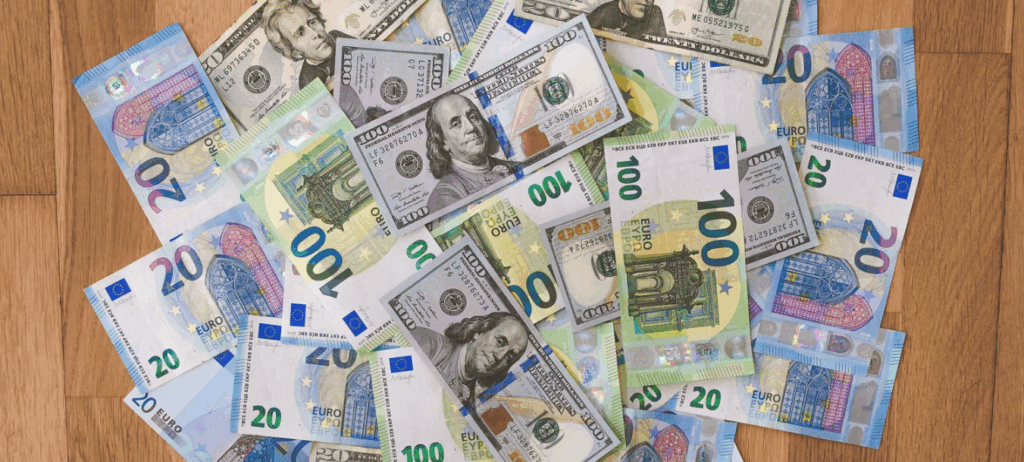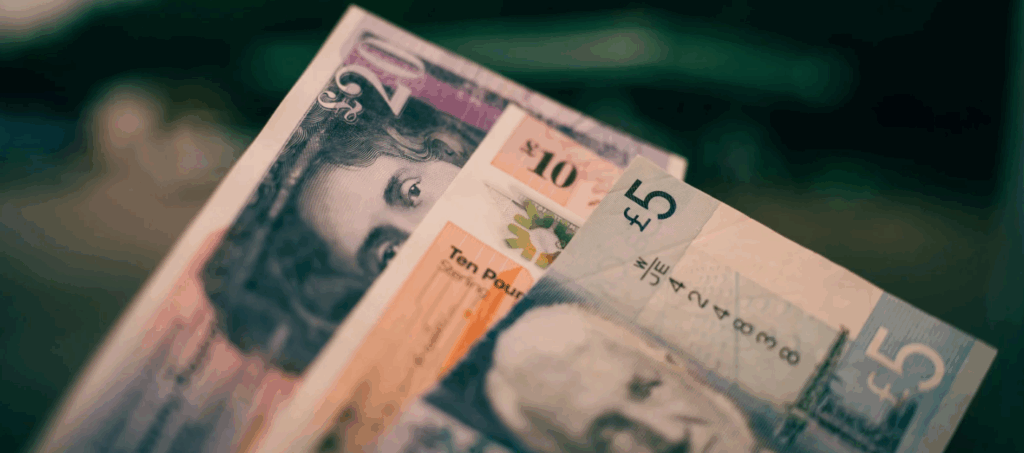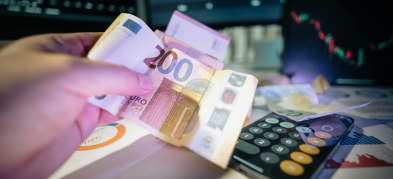
Ultima Markets App
Trade Anytime, Anywhere
Important Information
This website is managed by Ultima Markets’ international entities, and it’s important to emphasise that they are not subject to regulation by the FCA in the UK. Therefore, you must understand that you will not have the FCA’s protection when investing through this website – for example:
- You will not be guaranteed Negative Balance Protection
- You will not be protected by FCA’s leverage restrictions
- You will not have the right to settle disputes via the Financial Ombudsman Service (FOS)
- You will not be protected by Financial Services Compensation Scheme (FSCS)
- Any monies deposited will not be afforded the protection required under the FCA Client Assets Sourcebook. The level of protection for your funds will be determined by the regulations of the relevant local regulator.
Note: Ultima Markets is currently developing a dedicated website for UK clients and expects to onboard UK clients under FCA regulations in 2026.
If you would like to proceed and visit this website, you acknowledge and confirm the following:
- 1.The website is owned by Ultima Markets’ international entities and not by Ultima Markets UK Ltd, which is regulated by the FCA.
- 2.Ultima Markets Limited, or any of the Ultima Markets international entities, are neither based in the UK nor licensed by the FCA.
- 3.You are accessing the website at your own initiative and have not been solicited by Ultima Markets Limited in any way.
- 4.Investing through this website does not grant you the protections provided by the FCA.
- 5.Should you choose to invest through this website or with any of the international Ultima Markets entities, you will be subject to the rules and regulations of the relevant international regulatory authorities, not the FCA.
Ultima Markets wants to make it clear that we are duly licensed and authorised to offer the services and financial derivative products listed on our website. Individuals accessing this website and registering a trading account do so entirely of their own volition and without prior solicitation.
By confirming your decision to proceed with entering the website, you hereby affirm that this decision was solely initiated by you, and no solicitation has been made by any Ultima Markets entity.
I confirm my intention to proceed and enter this website Please direct me to the website operated by Ultima Markets , regulated by the FCA in the United KingdomBest Forex Currency Pairs to Trade
Choosing the best forex currency pairs to trade starts with understanding where global money actually flows. The latest Bank for International Settlements (BIS) survey shows that daily FX turnover has risen to about 9.6 trillion US dollars, with the US dollar on one side of around 89 percent of all trades. Within that huge market, trading is heavily concentrated in a small group of major forex pairs.
According to the latest Bank for International Settlements (BIS) triennial survey, global FX turnover has jumped to about $9.6 trillion per day in April 2025, a 28% increase from 2022. The US dollar remains dominant, sitting on one side of about 89% of all trades.
Independent analysis of the 2025 survey shows that:
- EUR/USD remains the most traded pair (around 21.2% of global turnover).
- USD/JPY holds second place at about 14.3%.
- The seven traditional major pairs still account for roughly two-thirds (66.3%) of global FX turnover, even as other pairs grow.
This guide breaks down the top forex pairs, explains how they behave, and shows you how to choose the right ones for your own trading plan.

What Are Currency Pairs?
Currency pairs are a way of quoting one currency’s value against another in the forex market. In every pair, the first currency is the base currency and the second is the quote (or counter) currency. The price shows how much of the quote currency you need to buy one unit of the base currency.
Example:
- EUR/USD = 1.1000
- EUR = base currency
- USD = quote currency
- 1 EUR = 1.10 USD
So you’re always trading one currency versus another, buying one while simultaneously selling the other.
How Many Currency Pairs Are Actually Tradable?
There’s no fixed official number, but in practice only a few dozen currency pairs are actively traded with good liquidity. Research shows that 18 core pairs account for the majority of global FX volume, while retail brokers typically offer around 40–80 tradable pairs (majors, minors and exotics) on their platforms.
5 Best Forex Currency Pairs to Trade
EUR/USD – Most Liquid and Widely Traded
EUR/USD is the benchmark in FX. It has the deepest liquidity and usually the tightest spreads across most brokers, which makes execution smoother and cheaper for almost every style like scalping, day trading, swing. Accounts for around 21.2% of global FX turnover, making it the single most traded currency pair in the world. Trades heavily during the London–New York overlap, giving strong intraday moves and clean reactions to macro news.
Traders who want tight spreads, high liquidity and lots of analysis/news. Great “core pair” if you’re building a watchlist of the best forex currency pairs to trade as a beginner.
USD/JPY – Top Pair for Rates and Asia Session
USD/JPY is heavily driven by interest-rate differentials and global risk sentiment. It is very liquid in both Tokyo and London sessions and offers clear macro stories (Fed vs Bank of Japan, yields, risk-on/risk-off). Roughly 14.3% of global turnover, making it the second most traded pair globally. The yen is a major safe-haven currency, so USD/JPY often reacts strongly when markets switch between risk-on and risk-off.
Traders in Asia–Pacific time zones who want an active pair during their day. Strategies that watch bond yields, central bank policy and risk sentiment.
GBP/USD – Higher Volatility for Experienced Traders
GBP/USD (“cable”) combines strong liquidity with above-average volatility. It tends to move more than EUR/USD on major news, offering bigger intraday ranges and momentum, attractive if you can handle swings. Around 7.6% of global daily turnover, placing it among the top global currency pairs. Frequently cited by brokers and analysts as one of the core “major” pairs alongside EUR/USD and USD/JPY.
More experienced day and swing traders who want larger moves. Those who follow UK vs US fundamentals (Bank of England vs Fed, UK data, risk sentiment around sterling).
AUD/USD – Commodity & Asia-Pacific Favourite
AUD/USD is a major pair with strong links to commodities (iron ore, coal, metals) and Chinese demand, so it often trends cleanly with global growth sentiment. It’s also one of the most active pairs during Asia–Pacific hours, which makes it a go-to market for traders in that time zone. Regularly ranks in the top 10 most traded currency pairs globally, contributing around 5% of daily FX turnover in recent BIS-based analyses. The Australian dollar is among the most traded currencies worldwide, heavily used for carry trades and commodity exposure.
Traders in Asia and Oceania who want an active pair during their daytime. Strategies that combine macro and commodities and China news (e.g. trading around RBA meetings, Chinese PMIs, iron ore moves).
USD/CAD – Oil-Sensitive North American Pair
USD/CAD gives you clean exposure to both the US economy and Canada’s oil-driven currency. Because Canada is a major crude exporter, USD/CAD often reacts strongly to oil price swings, which creates clear macro stories and trading setups. Sits in the global top 10 pairs, with roughly 5% of daily FX turnover according to BIS-based rankings. One of the main North American FX benchmarks, heavily traded during the New York session.
Traders active in US trading hours. Those who like to link WTI/Brent moves with FX, for example, watching USD/CAD when oil breaks key support or resistance.

What Makes These the Best Forex Currency Pairs?
The reason EUR/USD, USD/JPY, GBP/USD, AUD/USD and USD/CAD are often called the best forex currency pairs to trade isn’t just popularity. They tick several key boxes that matter for real trading performance:
High Liquidity
These pairs trade huge volumes every day, which means:
- Orders are filled faster and more reliably
- It’s easier to get in and out without moving the market
- Price action is less “choppy” from random illiquid spikes
Tight Spreads and Lower Costs
Because so many traders and institutions trade these pairs, brokers compete hard on pricing. Result:
- Tighter bid–ask spreads than most minors and exotics
- Better conditions for scalpers and day traders
- Less cost drag on every trade you place
Over hundreds of trades, tight spreads are a real edge.
Clear Fundamental Drivers
These majors are tied to large, transparent economies (US, Eurozone, Japan, UK, Canada, Australia), so they react in a logical way to:
- Interest-rate decisions
- Inflation and jobs data
- Growth and risk sentiment
That makes it easier to build a macro or news-based framework around them.
Balanced Volatility
They offer a good mix of movement and stability:
- Pairs like EUR/USD and USD/JPY tend to be smoother and easier for beginners
- GBP/USD and, to a lesser extent, AUD/USD and USD/CAD, provide bigger ranges for more experienced traders
Strong Coverage and Education
Because these are the top traded markets, you get:
- Plenty of analysis (bank research, news, chart ideas)
- More educational content and historical data
- Better tools and resources built specifically around these pairs
How Many Forex Pairs Should I Trade?
Start with 1–3 forex pairs. Only move up to 4–6 once you’re consistently profitable. Fewer Pairs = Better Focus. Every currency pair has its own “personality”, how it reacts to news, when it moves, how it pulls back.
If you watch too many pairs, you miss good setups because you’re jumping around, and you will overtrade just because you see something moving. You never really learn the deeper behaviour of any pair.
With 1–3 pairs (for example, EUR/USD, USD/JPY, GBP/USD):
- You see the same price patterns again and again
- You remember how they react to NFP, CPI, rate decisions
- You can build a clear playbook for each pair
Conclusion
The best forex currency pairs to trade are usually not the most exotic ones, but the ones that match your time zone, risk profile and strategy. Major pairs like EUR/USD, USD/JPY, GBP/USD, AUD/USD and USD/CAD offer the right mix of liquidity, tighter spreads and clear fundamental drivers which is exactly what most retail traders need to build a consistent approach.
Instead of trying to trade everything your platform offers, focus on a small watchlist of 3–5 major pairs, learn how they react to news, and apply strict risk management. Once you are consistent, you can gradually add selective crosses or exotics if they genuinely fit your edge.
With Ultima Markets, you can access a wide range of major, minor and selected exotic currency pairs, alongside market analysis and education designed to help you understand how each pair moves. Combine that market access with a disciplined plan and a focused watchlist, and you’ll be in a much better position to turn knowledge about the best forex currency pairs to trade into a structured trading routine.
Disclaimer: This content is provided for informational purposes only and does not constitute, and should not be construed as, financial, investment, or other professional advice. No statement or opinion contained here in should be considered a recommendation by Ultima Markets or the author regarding any specific investment product, strategy, or transaction. Readers are advised not to rely solely on this material when making investment decisions and should seek independent advice where appropriate.












